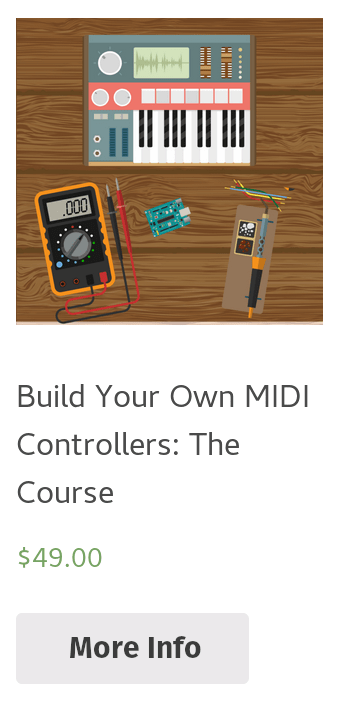How To Write Melodies and Overcome Writer’s block

Thinking of a melody might sound like a challenging task. Melody creation is a huge roadblock for new producers. It’s an even larger roadblock for producers who know ZERO music theory. Surprisingly, coming up with a great and catchy melody doesn’t have to be that hard. Of course, it will take some practice, but once you get good at it, it’s like riding a bike.
So how do artists manage to pull off anthem-like melodies, while your attempts sound pieced-together and random?
In this article, we’ll be exploring different ways to make killer melodies. Remember that there is NO secret formula that will guarantee you better melodies. Creativity is the most important factor for doing anything musical.
What you will learn:
- What is a musical scale?
- Writing a basic melody
- Using rhythm to your advantage
- What the heck is “harmony”?
- Need inspiration? Download midi files!
What is a musical scale?
Generally speaking, a musical scale is a set of harmonic keys that go together. The average song revolves around one scale. In some more complex pieces of music, such as classical, more than one scale is used. Most electronic musicians choose one scale and stick to it throughout a song.
The most basic scale you could possibly play is the C Major scale. It starts at the c-note and plays all of the white keys in order until it reaches the C note an octave above. There are no black keys in the C scale, making it the easiest scale to play.
Don’t worry… To make good music, you don’t necessarily need to memorize every single scale. You can use this free tool from Scale-Chords.com to find the notes in any scale.
Writing a basic melody
This video shows the basics on how to write a melody using Ableton Live 9 (but you can transfer the concepts learned into any other DAW whether you are using FL Studio, Logic, Reason, or even the infamous Dr. Drum.
When you’re first starting out, make sure to stay within one scale. It’s best to get the basics down before you get cocky with yourself. You can use the scale tool I mentioned above if you’d like go with a more interesting scale than C Major.
A useful little tip you can try out is to line up all the notes of the scale onto the sequencer window of your DAW and then use that as a guideline to make your melody. Ableton even has a fold function in its sequencer that will fold away all of the unused notes. This can be handy if you want to see ONLY the notes within your scale of choice. It will give you a more visual understanding on what you’re “allowed” to play.
I know earlier I said that you don’t have to memorize scales. While this is technically true, memorizing them will help you improvise melodies on the piano. For some people, physically coming up with melodies by playing around on the piano works more effectively than sequencing them on a computer. Having a few basic scales in your head couldn’t hurt.
Using rhythm to your advantage
Believe it or not, in most cases, rhythm matters a whole lot more than note-choice.
The rhythm of the melody you want to make depends on the type of vibe, genre, and mood of your track. Moving notes slightly off beat can give your track swing and completely change the feeling to it.
An important tip to mention is that all good melodies can be hummed. Whether you are making a pop, jazz, rock, or dubstep track, the melody should be memorable. If you’re listening back to your melody and it sounds like a computer randomly generated it, you have some tweaking to do!
Keep it simple but not too redundant. Unless you are feeling a bit risky and are jumping into more complex genres like classical, or jazz, simple melodies are often the best. Just remember Leonardo Da Vinci’s quote, “Simplicity is the ultimate sophistication”.
What the heck is “harmony”?
Harmony is putting together melodies and backup chords to form something that is harmonically pleasing to the ears.
Harmony can be a great way to add extra interest to your track. Once again, harmonies are usually relatively simple. A newbie mistake is to go crazy with your harmonies and stack so many elements on top of the initial melody that it all sounds cluttered.
Another cool thing you can do is making some parts of the melody solo and some with harmony. This makes your track have a little more breathing room in-between notes. A lot of pop music use this strategy. It adds resting points in your melody instead of having a ton of elements always playing at once.
Need inspiration? Download midi files!
MIDI files are an awesome way to get new melodies ideas since they let you examine the note structure of songs that were composed by professional artists.
On the website, MIDI World, you can access millions of free MIDI files that can help as an awesome reference for arranging your melody. They have downloads for almost every song that has ever been written.. You’ll find plenty of abstract artists as well as a plethora of mainstream artists.
Sometimes, DAWs and sound bundles will have royalty-free MIDI files included for your experimentation. FL Studio has a “riff machine” to help you get started on creating a basic melody. Don’t get too attached to midi files though! Take breaks to work on your own melody-creation skills instead of sampling others.
Last, but not the least, do a lot of listening, and I mean A LOT. Don’t be surprised that trained musicians can pull great melodies out of thin air. These people are always listening to new sounds and are constantly expanding their musical knowledge. They take inspiration from many different genres and combine them in their own tracks.
Bonus: Circle Of Fifths
The circle of fifths is a very useful tool that shows the relations of the 12 notes in the chromatic scale. Using the circle of fifths, you can do things like finding the key of a song or transposing a song to a new key. I really like LedgerNote’s explanation the circle of fifths.
Final Notes
Writing a melody doesn’t have to be rocket science. Just write whatever is in your heart and let the rest follow.
While it’s also important to know scales and basic music theory, what really matters is that you have fun with your production. If it is becoming frustrating to create a melody, the best thing you can do is take a break and come back later. Once you have gained some new inspiration, your ideas will flow much better.

Leave a Comment